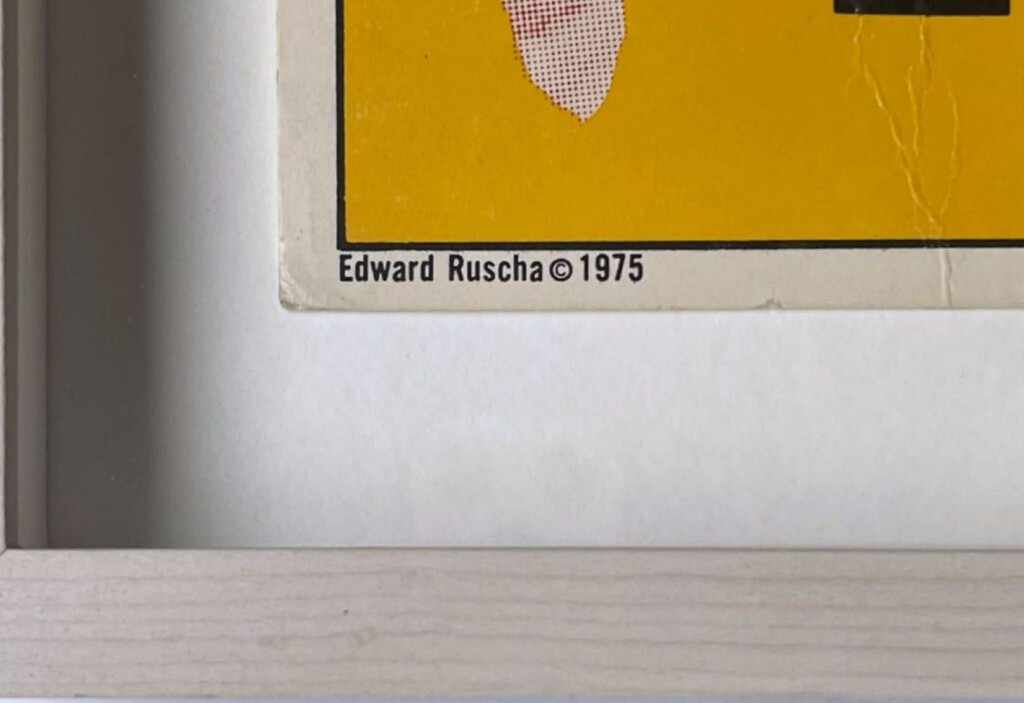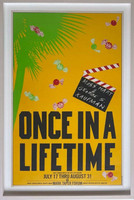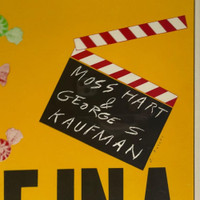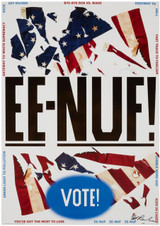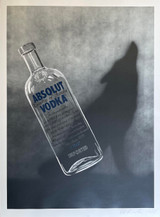
An Educated Collector is Our Best Client
In business for nearly two decades, we are a well established, popular contemporary art boutique specializing in expertly chosen, blue chip prints, multiples, uniques, books, ephemera and merchandise at different price points, with a focus on the secondary market. Please click on the "Contact Us" button at the bottom of this page for questions about any work, pricing and/or to arrange to visit our showroom/gallery - located in between Manhattan's Flatiron and Chelsea Flower Districts.
Description
Ed Ruscha
Once in a Lifetime, 1975
Offset lithograph poster on thin board
Not signed
Frame included
This incredibly scarce poster was designed by Ed Ruscha for the 1975-6 season theatrical production of the famed 1930s play "Once in a Lifetime" by the duo Moss Hart and George S. Kaufman, at the Music Center, Center Theatre Group/Mark Taper Forum, Los Angeles, CA. The play was a satirical send up of Hollywood as the first all-talking motion pictures replaced silent films. It was so cleverly written that the play continued to be produced throughout the rest of the 20th century. The poster has the printed text: EDWARD RUSCHA, followed by his copyright and the year (1975) on the front. Ed Ruscha is an artist whose entire career has been preoccupied with the theme of the fall of the American empire -- so it seems apt that he would design the poster for Once in a Lifetime, which mocks the fantasy of Hollywood and the American dream.
This work is elegantly floated and framed in a museum quality white wood frame with UV plexiglass
Measurements:
24.5 inches vertical by 16.5 by 1.5 inches
22 inches vertical by 16 inches
Publisher
Music Center, Center Theatre Group/Mark Taper Forum, Los Angeles, CA
More about the history and writers behind the production "Once in a Lifetime":
Moss Hart and George Kaufman
It's winter of 1928 and the biggest news in entertainment is the whopping success of Al Jolson in The Jazz Singer, the first all-talking picture. A down-at-heels vaudeville troupe—the ascerbic May Daniels, the fast-talking Jerry Hyland, and their slightly dopey cohort, George Lewis, the "best deadpan feeder in the business—decide to make their fortune by going Hollywood. The only problem is: they don't know what they're going to do out there. That's all right: no one knows anything in Hollywood either. The trio pretends to be a team of skilled vocal coaches and, with the help of Lotusland's greatest gossip columnist, Helen Hobart, they find themselves working for Herman Glogauer, the volatile producer behind Glogauer Pictures. Glogauer doesn't know what to do about his actors in talkies: "Things were going along fine. You couldn't stop making money—even if you made a good picture, you made money." Mistakenly thinking that dimwitted George is a visionary genius, Glogauer makes him head of production, and George obliges him by making the worst picture ever made. Yet, even this comedic satire has a Hollywood ending: George makes the studio a success despite himself and finds the girl of his dreams, while May and Jerry fall into each other's arms. Fade-out: the end.
There had been very few plays about Hollywood—and even fewer satires—when the 24-year-old Moss Hart approached George S. Kaufman in 1929 with a first draft called Once in a Lifetime. Kaufman leapt at the chance to collaborate with the first-time writer and, although neither man had been to Hollywood, they had been inundated with enough fatuous material in the press and with enough dopey movies to take a crack at satirizing the film colony. Their gifts for poking Hollywood in its collective eye were so sharp that, 75 years later, Once in a Lifetime remains the granddaddy of all Tinseltown comedies (Singin' in the Rain borrows heavily from it) and is arguably still the best. Certainly as a gag-filled, glamorous, dynamic portrait of the idiocies of the film industry at its peak, this comedy cannot be topped.
The road to Broadway was not an easy one, however, as Hart chronicled brilliantly in his 1959 memoir, Act One. Kaufman not only cowrote the script, but directed it as well and played the supporting part of the cynical and despairing East Coast playwright, Lawrence Vail. During the play's tryouts, Kaufman thought the show was a lost cause, but Hart prevailed and they roared into the Music Box Theater with a huge hit. The play's success made Hart's reputation (he would go on to play Vail in a Los Angeles production) and the partnership of Kaufman and Hart was off to a resounding start. In a gesture not often seen in the frequently ungenerous world of the theater, George Kaufman announced at the opening night curtain call that "80% of this show is Moss Hart."
Once in a Lifetime opened at the Music Box Theatre on September 24, 1930 and ran for 305 performances. It was eventually filmed in 1932, although industry wags wondered how any film producer would have the guts to put it on screen. (Universal producer Carl Laemmle affixed his signature to a title card saying the industry had "the ability to laugh at itself.") The show's immense size kept it off the boards for many years (although an intriguing item in Variety in 1954 claimed that Hart was going to rewrite it as a musical spoof of 3-D for Phil Silvers), until the Royal Shakespeare Company produced a smash revival in 1977 with Zoe Wanamaker and Richard Griffiths. A 1978 Broadway revival at Circle in the Square, starring John Lithgow and Treat Williams restored the show's reputation in the States and many repertory theaters have produced it since, including the Guthrie Theatre in Minneapolis in 2001, with Richard Kind as George and Lewis J. Stadlen as Glogauer. In the winter of 2005, London's National Theatre produced a first-class revival with David Suchet as Gloguaer.




